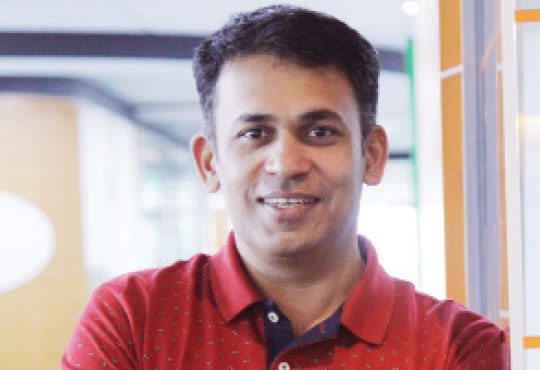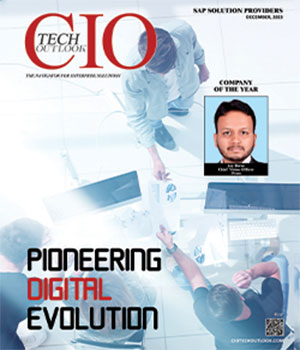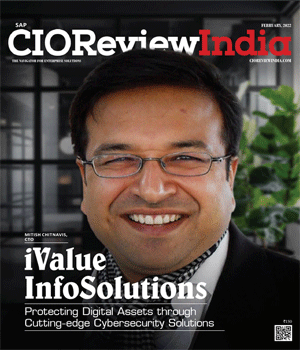
Default is DIGITAL
Nilesh Sahasrabudhe,Country Manager and VP- Tieto
 My candid and positive opinion is - Digitalization is hyped, messy and complex with more than 50 billion intelligent devices to be connected to the Internet by the year 2020. This is already the dawn of the new dot com boom, thus opening up enormous opportunities for organizations and people having willingness and ability to think differently. The ownership of customer, privacy and security are the things which are going to be of top notch priorities for everyone who wants to succeed.
My candid and positive opinion is - Digitalization is hyped, messy and complex with more than 50 billion intelligent devices to be connected to the Internet by the year 2020. This is already the dawn of the new dot com boom, thus opening up enormous opportunities for organizations and people having willingness and ability to think differently. The ownership of customer, privacy and security are the things which are going to be of top notch priorities for everyone who wants to succeed.
Declining Security in Connectivity
The root cause for “Disruption” is connectivity. The third wave of the Internet is here, the first two being Internet of information and Internet of people. Now is the era of the Internet of things.
From connected cars, watches, censors almost everything has an IP address and intelligence to process the instructions and take decisions. Today, robots are sitting in leadership teams & board meetings assisting business proceedings.
The connectivity is layered IoT->Mobile->Desktop->Infrastructure. This layering of connectivity multiplicative and exponential. The rapid transition from closed networks to enterprise IT networks to the public Internet is accelerating at an alarming pace—and justly raising alarms about security. As we become increasingly reliant on intelligent, interconnected devices in every aspect of our lives, how do we protect potentially billions of them from intrusions and interference that could compromise personal privacy or threaten public safety?
The Rescue Factor
IoT security is the area of endeavor concerned with safeguarding connected devices and networks in the Internet of things (IoT). The main problem is that because the idea of networking appliances and other objects is relatively new, security has not always been considered in product design.
Back to basics security cannot be thought of as an add-on to a device, but rather as integral to the device’s reliable functioning. Software security controls need to be introduced at the operating system level, take advantage of the hardware security capabilities now entering the market, and extend up through the device stack to continuously maintain the trusted computing base. Building security in at the OS level takes the onus off device designers and developers to configure systems to mitigate threats and ensure their platforms are safe.
The good news, though, is that tried-and-true IT security controls that have evolved over the past 30 years can be just as effective for IoT—provided we can adapt them to the unique constraints of the embedded devices that will increasingly comprise networks of the future.
Adding a few basic security capabilities can make IoT devices dramatically more secure, and greatly reduce the risk of a cyber-attack including:
· Secure boot
· Secure remote firmware update
· Secure communication
· Data protection
· User authentication
A Key Building Block
Embedded systems technology will be a key building block in nearly all intelligent products. Large enterprises are trying to overcome the challenges they have in agility and flexibility to grab new opportunities. On the positive side, their appetite to digest failures is bigger. Small companies are moving fast and working in a focused manner on innovative business models, making their space indispensable in the new ecosystem. Another challenge is competence transformation - with constantly evolving technology we will never have ready-made talent availability. This requires organizations to further invest on forming new hybrid teams with a mix of fresh talent having edge in new technology and existing talent handling complexity. The world of “Duality” is real and here to stay.
It is forecasted that at least 8% of the current jobs will be entirely replaced with robots within next 20 years. Implementation of Cognitive automation & AI threatening human workforce losing jobs. On the contrary I see automation will create more jobs – the effect is rather enrichening the working life when there’s more time for tasks that really need human touch, culture building and leadership. And many more jobs than that will see part of their tasks, that are included in a professional role, shift to robots – while other new areas form up as new tasks, becoming a part of that role.
All said and done, values and culture can never be machine-managed, and the organization model is rolling from the matrix and line organization’s hierarchy toward family-like models that resemble a living organism and are better able to utilize advanced technology.
Going digital is no longer an option, but a way of life!
CIO Viewpoint
Why Foolproof Facial Recognition Is Key Against...
By Joseph Sudheer Thumma, Global CEO & MD, Magellanic Cloud
National Technology Day 2025: Powering Progress...
By CIOTech Outlook Team
Aligning IT Roadmap with Business Objectives: A...
By Subhash singh Punjabi, CISO & Head Enterprise Architecture, Deepak Fertilisers & Petrochemicals Corporation Ltd
CXO Insights
Prasa: A Pioneer in Offering Precise Solutions...
By Jay Burse, Chief Vision Officer
SAP, the Digital Future Navigating Business...



.jpg)
.jpg)






